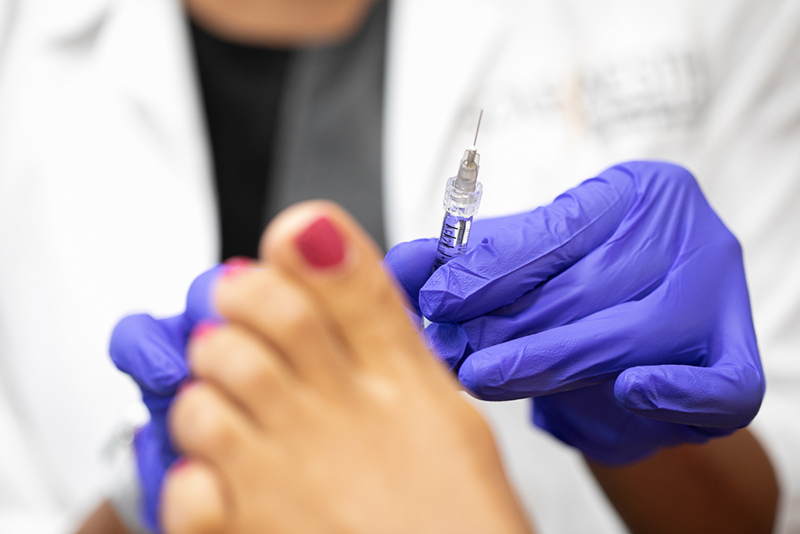
PRP Treatment for Damaged Foot Tendons
If you become injured, your body will start the healing process to repair damaged tissue by sending platelets to the area of injury. However, the body’s natural healing process can take an extended amount of time. PRP treatment is a method that promotes healing with platelet rich plasma (PRP) injections.
What are Platelets?
Platelets are naturally occurring substances that are found in the blood. They contain growth factors and proteins that can regulate the division of cells, increase tissue regeneration, and speed healing. In addition, platelets also help with blood clotting.
What is Plasma?
Plasma is the liquid substance of your blood. Although it is primarily water, it also contains growth factors, glucose, antibodies, and nutrients.

What is the Process for PRP Injections?
After a blood sample is taken, the blood will be placed in a centrifuge and spun at very high speeds. This will cause the components of the blood to separate and form different layers. The red blood cells will be at the bottom, the white blood cells and platelets will be in the middle layer, and the plasma will be at the top layer. When the centrifuge process is finished, your doctor will remove and purify the PRP.
If you are having PRP treatment for damaged tendons in your foot, the area will be cleaned with a disinfectant. Before the injection, you may be given local anesthesia to ease any discomfort. The PRP will be injected into the affected tendon in your foot. The concentrated PRP that is injected into the damaged tendon will release up to five times the amount of growth factors that are in the blood. After the injection is complete, your foot will be cleaned and bandaged.
How to Recover From PRP Injections
There may be slight inflammation and swelling at the injection site. It is suggested to refrain from putting too much pressure on your foot for a few days following the procedure. Dr. Barrow can provide you with all of the pre and post-care instructions you need, but you should generally be able to return to most normal daily activities.
What are the Benefits of PRP Therapy for Damaged Foot Tendons?
There are many advantages of having PRP treatment for damaged tendons. Since PRP is made of your body’s own substances, there is little chance of an adverse reaction. In addition, surgery to treat damaged tendons in your foot will require a longer recovery time than PRP treatment.

Do you think you could benefit from dermal fillers to reduce daily foot pain? Contact us today at Sole Aesthetic! Dr. Barrow proudly serves you from Bellaire, TX, and she can help you determine the best treatment option for your condition. Schedule your consultation today and start your journey to having a pep back in your step.
